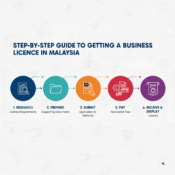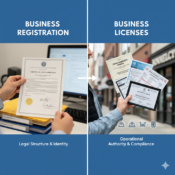
COMPARISON OF THE COMPANIES ACT 1965 AND THE COMPANIES ACT 2016
Updated: Apr 24, 2022
The Companies Act 2016 (“CA2016”) enacts fundamentally significant changes to the company law in Malaysia. It introduces new concepts in relation to incorporation, capital allocation decisions, secured creditors’ rights, reporting requirements, corporate governance and rescue mechanisms. It is also a reinstatement of existing rules.

The major changes are summarized below:
A. Company Formation and Administration
B. Legal Framework for Managing and Altering Share Capital Structure
C. Governance Framework
D. Changes to the Law on Meetings
E. Directors’ Duties and Rights
F. Reporting and Auditing Requirements
G. Corporate Rescue, Rehabilitation and Reorganisation
A) Company Formation and Administration
The incorporation process is simplified by the use of one incorporation form. A company may be incorporated as a private company:-
- with a single member who can be either an individual or another company; and
- with a single director who must be resident in Malaysia (Section 196) and that sole director may also be the sole member.
The Company Secretary must call a meeting of the next of kin, other personal representatives or a meeting of members if the sole director of the last remaining directors of a company:-
- dies;
- become disqualified;
- becomes unsound mind; or
- vacate office in accordance with the Constitution of a company.
Other administration matters of a company are summarized as follows:-
| Categories | CA1965 | CA2016 |
| Formation of a company | At least 2 resident directors and 2 members (individuals). | At least 1 resident director and 1 member (corporate or individual) for private limited company |
| Period of reserving an approved name | 3 months | 30 days |
| Type of incorporation forms | Forms 6, 48A and Memorandum and Articles of Association | Super Form (Section 14) |
| Capacity of a company | Carry on business as per object clause in the Memorandum of Association | Unlimited capacity |
| Disclosure of beneficiary interest in voting shares | Only exercisable for a public listed company. | Save for exemptions given, it is required to disclose beneficial interests in voting shares by all companies. |
| Share certificate | Required | Optional |
| Common seal | Required | Optional |
B) Legal Framework for Managing and Altering Share Capital Structure
i) No Par Value Regime
CA2016 introduces the no par value (“NPV”) environment whereby the shares are issued at a price to be determined by the directors. Under CA1965 that requires a company to determine the par value or the nominal value of its shares. Previously, under the CA1965, a company must state its authorized share capital and par value of each share, and the number of shares issued by a company must not exceed its authorized share capital. Under CA2016, a newly incorporated company is not required to state its authorized share capital or par value of its shares. Consequently, shares issued at discount, shares issued at premium and the share premium account have become redundant.
ii) Pre-emption Rights
Any new shares to be issued by a company must firsts be offered to existing shareholders in a manner that will maintain the relative voting and distribution rights of those shareholders. This is subject to the constitution, which may provide differently.
A pre-emption rights clause serves to protect existing shareholders’ voting power by entitling them to participate in the issuance of new shares and give them an option whether or not they want to participate in the issuance of new shares. Pre-emption right clause is intended to prevent the dilution of existing shareholdings by giving the existing shareholders the right to subscribe for new shares to maintain their shareholding proportionately.
iii) Introduction of the Solvency Test and the Solvency Statement
Solvency statements and solvency test are introduced in CA2016 for several transactions involving a company’s capital that can only be carried out if a company complies with the solvency test, which must be made by way of solvency statement.
The solvency tests operates on a basis that a company must make sure that it has sufficient funds to pay off its debts to its creditors. The CA2016 requires the solvency test to be complied with in relation to:
- Redemption of redeemable preference shares;
- Reduction of capital; and
- Giving of financial assistance.
For these transactions, the asset of the company is more than liability of the company at the date of transaction. A solvency test is to ensure that immediately after the transaction, there is no ground for a company to be unable to pay off its debts either:
- In an event of winding up, a company will be able to pay its debts in full within 12 months after commencement of winding up; or
- In other cases, a company will be able to pay off its debts as they fall due during 12 months from the transaction date.
The solvency statement is a statement made by each director that they have formed an opinion that a company satisfies the solvency test in relation to the transaction. The directors’ opinion must be:
- based on the directors’ inquiry into the company’s state of affairs and prospects; and
- must take into account all the company’s liabilities including contingent liabilities.
Penalty:
| Provisions | CA1965 | CA2016 |
| Duties and responsibilities | – | 5 years or RM 3 Million or both ( S213 ) |
| Improper us of info, property | 5 year and RM30,000 | 5 years or RM 3 Million or both ( S218 ) |
| Disclosure of interest | 7 years and RM150,000 | 5 years or RM 3 Million or both ( S221 ) |
| Voting in personal interested contract | 5 years and RM150,000 | 5 years or RM 3 Million or both ( S222 ) |
| Loans to director and persons connected | RM10,000 | 5 years or RM 3 Million or both ( S224 / S225 ) |
| Prohibition of tax free payments to directors | RM10,000 | 5 years or RM 3 Million or both ( S226 ) |
| Payments to directors for loss of office | RM5,000 | RM250,000 (S227) |
| Transactions with related party | 7 years and RM250,000 | 5 years or RM 3 Million or both ( S228 ) – 10% of net assets / > RM250,000 |
| Distribution of dividend | 7 years and RM250,000 | 5 years or RM 3 Million or both ( S228) |
| Approval of dealing with undertaking / property | 5 years and RM30,000 | 5 years or RM 3 Million or both ( S223 ) (25% of Net assets / Net profits ) |
COMPARISON OF THE COMPANIES ACT 1965 AND THE COMPANIES ACT, 2016






